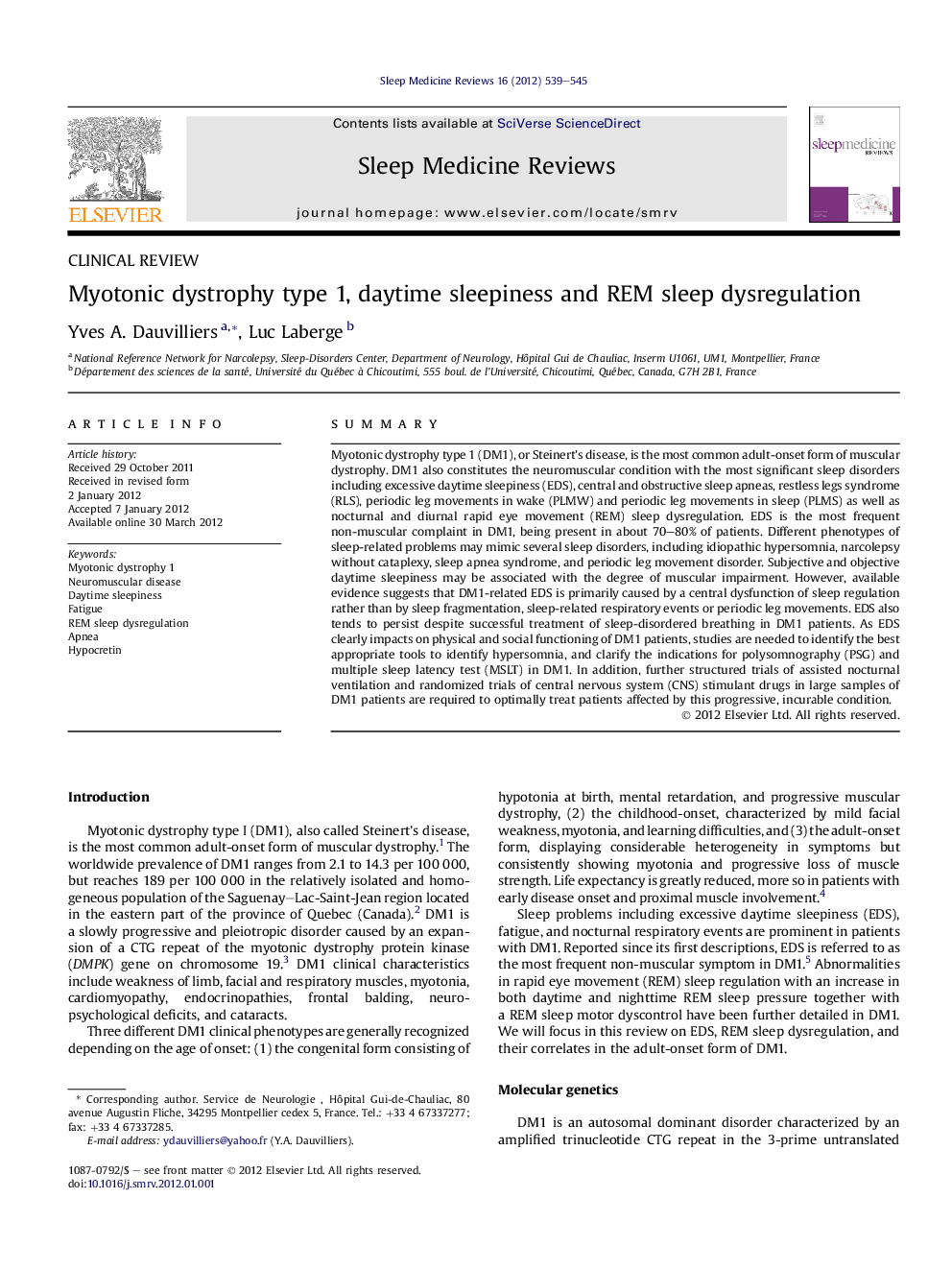| Article ID | Journal | Published Year | Pages | File Type |
|---|---|---|---|---|
| 3091522 | Sleep Medicine Reviews | 2012 | 7 Pages |
SummaryMyotonic dystrophy type 1 (DM1), or Steinert’s disease, is the most common adult-onset form of muscular dystrophy. DM1 also constitutes the neuromuscular condition with the most significant sleep disorders including excessive daytime sleepiness (EDS), central and obstructive sleep apneas, restless legs syndrome (RLS), periodic leg movements in wake (PLMW) and periodic leg movements in sleep (PLMS) as well as nocturnal and diurnal rapid eye movement (REM) sleep dysregulation. EDS is the most frequent non-muscular complaint in DM1, being present in about 70–80% of patients. Different phenotypes of sleep-related problems may mimic several sleep disorders, including idiopathic hypersomnia, narcolepsy without cataplexy, sleep apnea syndrome, and periodic leg movement disorder. Subjective and objective daytime sleepiness may be associated with the degree of muscular impairment. However, available evidence suggests that DM1-related EDS is primarily caused by a central dysfunction of sleep regulation rather than by sleep fragmentation, sleep-related respiratory events or periodic leg movements. EDS also tends to persist despite successful treatment of sleep-disordered breathing in DM1 patients. As EDS clearly impacts on physical and social functioning of DM1 patients, studies are needed to identify the best appropriate tools to identify hypersomnia, and clarify the indications for polysomnography (PSG) and multiple sleep latency test (MSLT) in DM1. In addition, further structured trials of assisted nocturnal ventilation and randomized trials of central nervous system (CNS) stimulant drugs in large samples of DM1 patients are required to optimally treat patients affected by this progressive, incurable condition.
